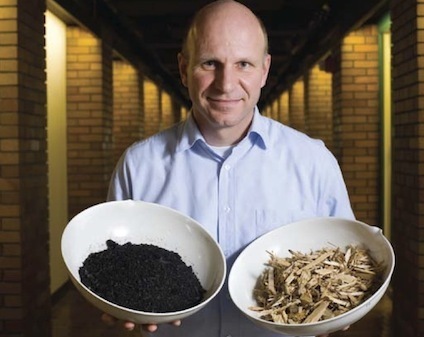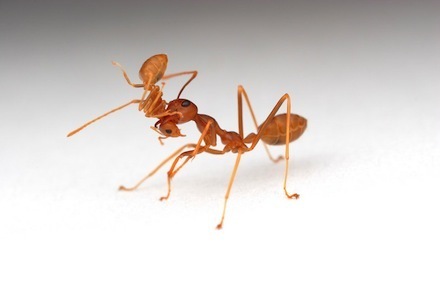Carl Zimmer's Blog, page 83
September 1, 2010
Networks Upon Networks!
In July I cobbled together a list of the science bloggers who had decided to pull up stakes and leave scienceblogs.com because of a dispute over a blog written by Pepsi. I started the list out of sympathy for bloggers who risk losing lots of readers as they move off the Google radar, expecting that they'd move out of the big scienceblogs city to build a little sod house of their own on the Wordpress prairie. But to my surprise, a lot of them have moved into other blog networks, or created...
Black Is the New Green: My new article for Conservation
 Can burning scrap fight global warming, provide energy to the world's poor without killing millions with smoke, and boost their food supply by improving the soil–all at once? The mysterious "black earth" of the Amazon, created by its inhabitants 8,000 years ago, hints that all this might be possible. I take a look at the story of biochar in "Black is the New Green," appearing in the new issue of Conservation.
Can burning scrap fight global warming, provide energy to the world's poor without killing millions with smoke, and boost their food supply by improving the soil–all at once? The mysterious "black earth" of the Amazon, created by its inhabitants 8,000 years ago, hints that all this might be possible. I take a look at the story of biochar in "Black is the New Green," appearing in the new issue of Conservation.

August 31, 2010
Reminder: Science writing class starts next Tuesday
I just wanted to send out a quick reminder to any readers at Yale that my class, Writing about Science and the Environment (EVST 215a) will have its first meeting this coming Tuesday, 9/6, at 9:20 am.
You can check out the syllabus at the university course information page. (Search for EVST 215.)
If it interests you, please consider applying. And if you're not interested, please pass on this information to anyone you think might be. Thanks.

August 30, 2010
Dawkins meets giraffe: the full show
Thank you, hive mind. (Actually, Dallas in particular.) the whole episode of Inside Nature's Living Giants in which Dawkins ponders the anatomical wonder and goofiness of the giraffe.

Dawkins gets inside the giraffe's neck
In the Tangled Bank, I wrote about how life has to evolve within constraints–constraints of physics, development, and history. One of the examples I used was the laryngeal nerve in giraffes. It travels down the giraffe's neck, takes a U turn, and then heads back up again. It seems ridiculous, but makes sense if you think about how it was laid down in fish without necks, and was then gradually modified–rather than re-engineered outright–as tetrapods grew necks, and then taken to surreal...
A box full of Ping-Pong balls: My article on inclusive fitness in NY Times
 On Wednesday, EO Wilson and colleagues at Harvard came out swinging at a major concept in modern evolutionary biology, known as inclusive fitness. A generation of scientists has used it to explain how animals help each other–because they're kin. In the new paper, Wilson and colleagues say it's superfluous.
On Wednesday, EO Wilson and colleagues at Harvard came out swinging at a major concept in modern evolutionary biology, known as inclusive fitness. A generation of scientists has used it to explain how animals help each other–because they're kin. In the new paper, Wilson and colleagues say it's superfluous.
I've written a story about the paper–and the sparks flying from it in biology circles–for tomorrow's issue of the New York Times. I very much liked the way Jim Hunt, an expert on wasps...
August 27, 2010
Viruses invade the Tech Review 35
I've contributed my first article to Technology Review–a short profile of Tim Lu of MIT, one of TR's 35 innovators under 35. Lu is engineering viruses to attack biofilms–not just the ones that make us sick, but the ones that gum up factories and HVAC systems. Elegant and practical at the same time. Congratulations to all the winners!

August 23, 2010
Malaria, Sea Grapes, and Kidney Stones: A Tale of Parasites Lost
If you're looking for a gang of vicious killers, look no further than the Apicomplexans. These single-celled protozoans cause death and destruction across the animal kingdom. They infect everything from butterflies to people. Their diseases include Texas Cattle Fever, toxoplasmosis, and the scourge that makes Plasmodium the baddest Apicomplexan of them all, malaria.
Scientists have named 6,000 apicomplexans, but they estimate there may be anywhere between 1.2 and 10 million species waiting to ...
August 19, 2010
Podcasts: Microbe Time and Minimal Life
 I've got two podcasts at Meet the Scientist to tell you about.
I've got two podcasts at Meet the Scientist to tell you about.
The first is a conversation with Nancy Moran, a Yale biologist who studies microbes that become essential to the survival of their hosts. In some cases, these symbionts lose just about all their DNA except for the genes that they use to be useful to their host–leading to the smallest genomes in nature.
The second is a conversation with Susan Golden of UCSD on the subject of time. We humans have a body clock, of course, but so do...
August 18, 2010
My new brain column: Snapping neurons
My new column about the brain has just gone up on the Discover web site. In it, I take a look at what happens when our brains get stretched, smushed, and otherwise injured. Brains don't break like bones or rip like skin. Their injuries lurk down in the realm of molecules. And perhaps that's where scientists will find a way to treat brain injuries. Check it out.














